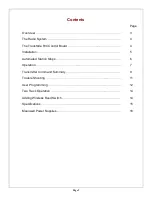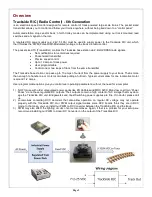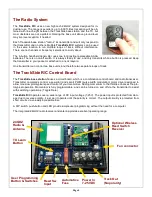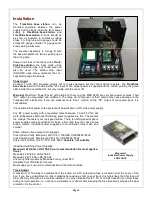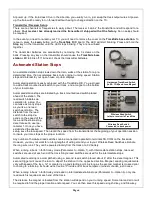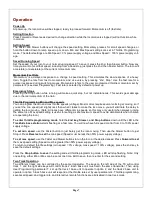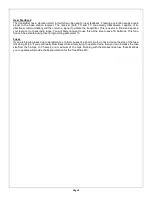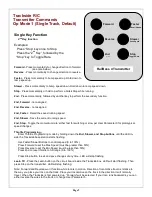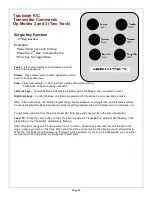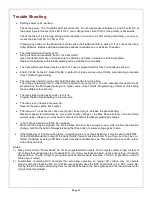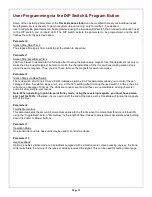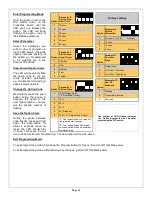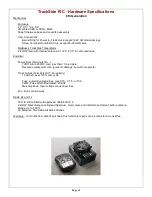
Page 3
Overview
Trackside R/C (Radio Control) - 6th Generation
is an electronic speed control designed for remote control of track powered large scale trains. The pocket sized
transmitter allows you to control and follow your trains anywhere, without being tied down to a “control panel”.
Automated station stops and/or back ‘n forth trolley mode can be implemented using our track mounted reed
switches and a magnet on the loco.
A regulated DC power supply (e.g. 24V, 5-10A) must be used to supply power to the Trackside R/C unit, which
then throttles the PWM (Pulse Width Modulated) voltage to the track via radio control.
The pocket sized TX (Transmitter) controls the Trackside base station via 2.4GHZ DSSS radio signals.
No modifications to locomotives required
Pocket sized transmitter
Precise speed control
Up to 10 amps of track power
User programmable
Control one or two loops of track from the same transmitter
The Trackside base station can pass up to 10 amps of current from the power supply to your track. That is more
than enough to handle one or more locomotives pulling a full train. Typical current draw for one locomotive motor
is around 1-2 Amps.
User programmable options give you control over operating parameters, without the need for a computer.
1) NOT for use with older unregulated power packs like PH Hobbies and MRC 6200. Many low cost train “Power
Packs” do not have regulated DC outputs. Their outputs contain a high content of AC voltage that may dam-
age the Trackside R/C unit. Bridgewerks and Crest Switching power supplies are fine. If in doubt, please call
us.
2) Locomotives containing DCC decoders that also allow operation on regular DC voltage may not operate
properly with the Trackside R/C. Our PWM output signal makes some DCC boards think they are in DCC
mode. In that case, you can install our PWM to DC Converter between the TrackSide R/C and the track.
3) PWM may also affect the lighting circuits of some locomotives. Again, if that is a problem for your setup, we
recommend installing our PWM to Linear DC Converter on the output of the TrackSide R/C.


